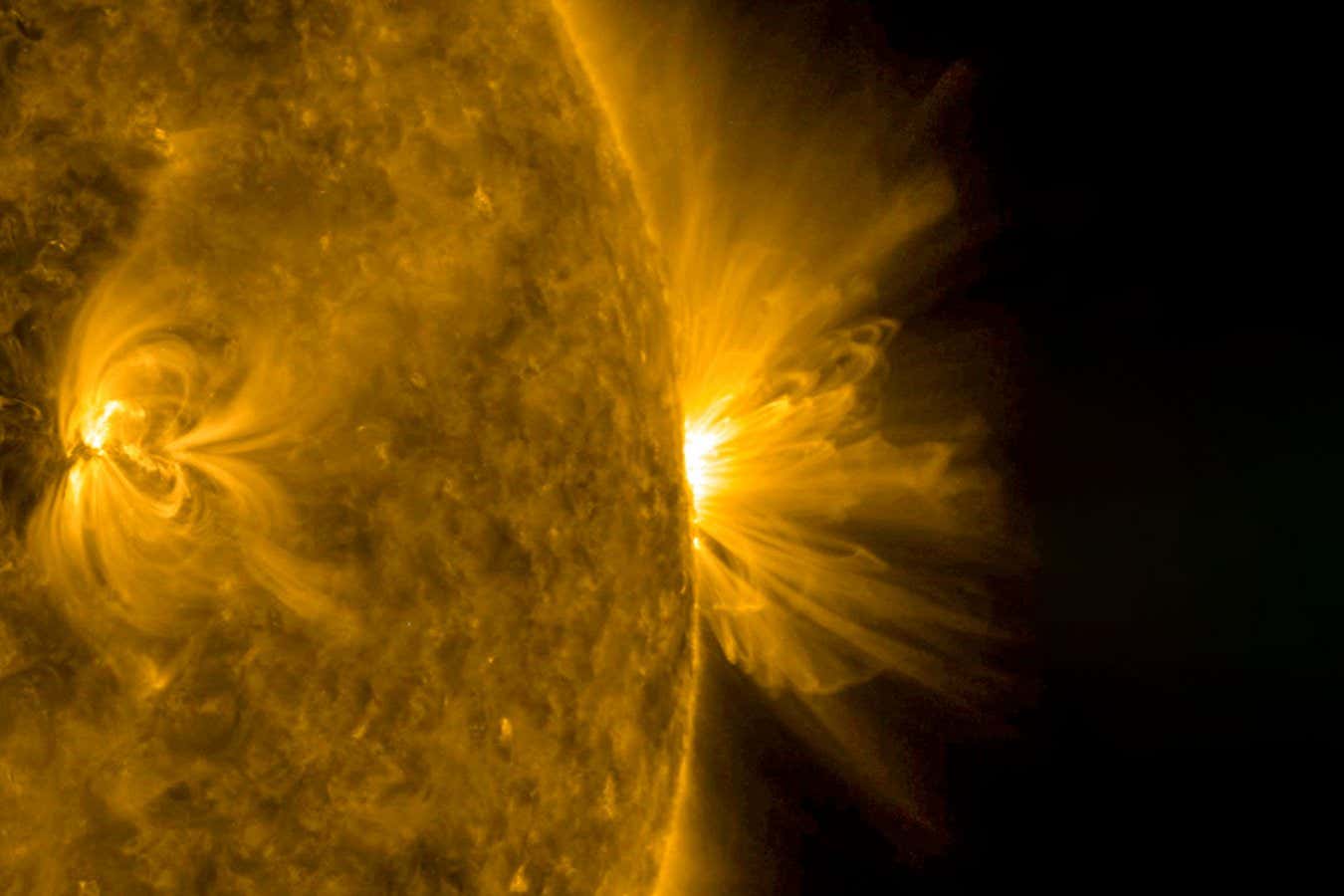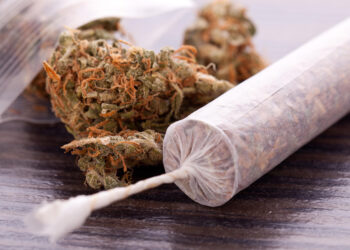
Solar storms pose a threat to electronic systems on Earth
Solar Dynamics Observatory, NASA.
We may one day be able to forecast powerful solar storms capable of devastating Earth’s electronics more than half a day in advance, following a successful test of the approach using the Solar Orbiter spacecraft.
The sun occasionally releases powerful blasts of plasma called coronal mass ejections (CMEs), which can generate strong magnetic fields that might damage electronics on Earth. However, while we have satellites and telescopes watching for signs of a CME, we can’t accurately predict which ejections pose a threat, because this depends on the magnetic field inside the CMEs themselves.
Among our most reliable tools for measuring these magnetic fields are satellites in gravitationally stable orbits around Earth called Lagrange points. These satellites are located hundreds of thousands of kilometres from Earth – but they are still positioned only about 1 per cent of the distance between our planet and the sun, which helps explain why they can only give warning of how powerful a CME might be less than an hour before it hits.
Now, Emma Davies at the Austrian Space Weather Office in Graz and her colleagues have found a way to provide an earlier warning using the European Space Agency’s Solar Orbiter, which orbits our star between 30 and 90 per cent of the distance between the sun and Earth. “Solar Orbiter is a science mission, it’s not really designed for this purpose,” says Davies. “This is just a bonus that we’ve been able to use it for a fortuitous alignment when a CME comes along.”
On 17 and 23 March this year, Solar Orbiter was passing between Earth and the sun when two pairs of CMEs began racing towards our planet. Davies and her team used the spacecraft’s measurements of the magnetic field and solar wind speed to model each CME’s internal magnetic structures, which they could then use to predict the strength of the geomagnetic storm that each CME would produce. The entire process took fewer than 5 minutes and allowed the researchers to predict the strength of the storms 7 and 15 hours, respectively, before they reached Earth.
The predictions matched the actual geomagnetic storm strengths closely, says Davies. This is actually surprising, she says, given how much change a CME’s magnetic field can experience as it travels towards Earth. “The fact that not too much extra happened to it was quite lucky, and these CMEs were seemingly quite well behaved,” says Davies.
Future storms may not be so predictable, she cautions, and it was still difficult to predict exactly when these ones arrived, with at least several hours of uncertainty for both.
Even so, measuring CMEs soon after they leave the sun is a worthwhile activity, says Chris Scott at the University of Reading, UK, who wasn’t involved in the study. “It gives us early warning as to the likely configuration of magnetic field within each eruption,” he says, which can help us predict roughly how powerful a solar storm will be.
However, the data from just two events won’t be enough to refine predictive models and many more observations will be needed before we can have reliable custom-designed solar storm monitoring missions that orbit close to the sun, says Scott.

The world capital of astronomy: Chile
Experience the astronomical highlights of Chile. Visit some of the world’s most technologically advanced observatories and stargaze beneath some of the clearest skies on earth.
Topics:
Source link : https://www.newscientist.com/article/2494433-spacecraft-used-to-forecast-solar-storm-15-hours-before-it-hit-earth/?utm_campaign=RSS%7CNSNS&utm_source=NSNS&utm_medium=RSS&utm_content=home
Author :
Publish date : 2025-09-01 09:01:00
Copyright for syndicated content belongs to the linked Source.







